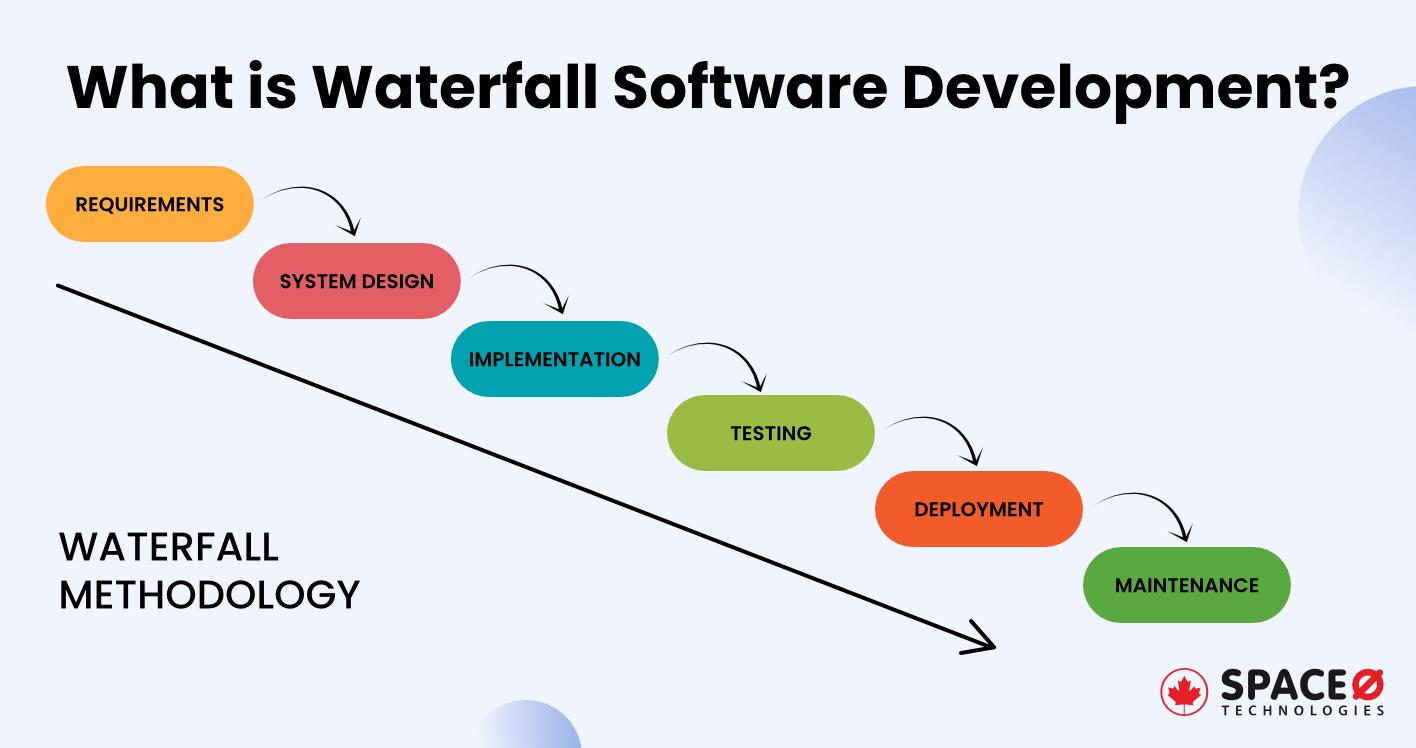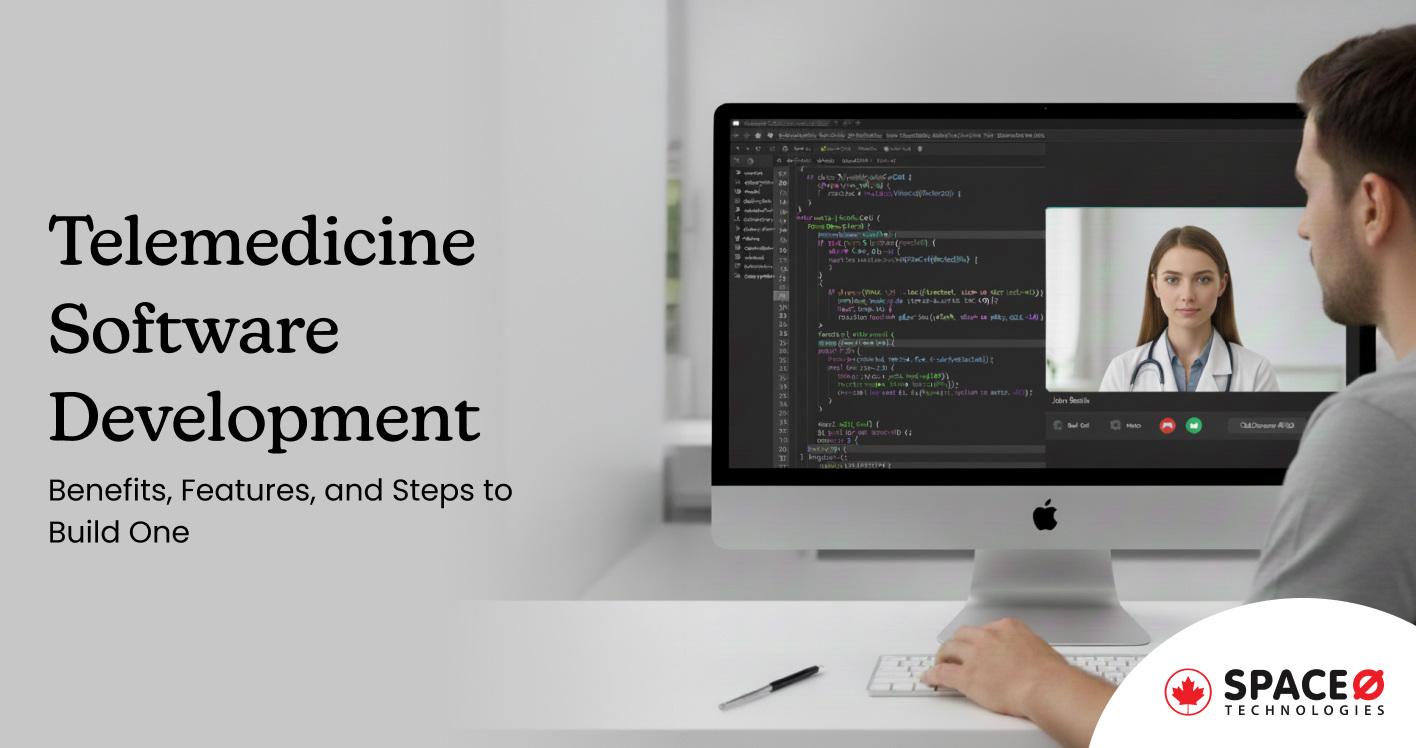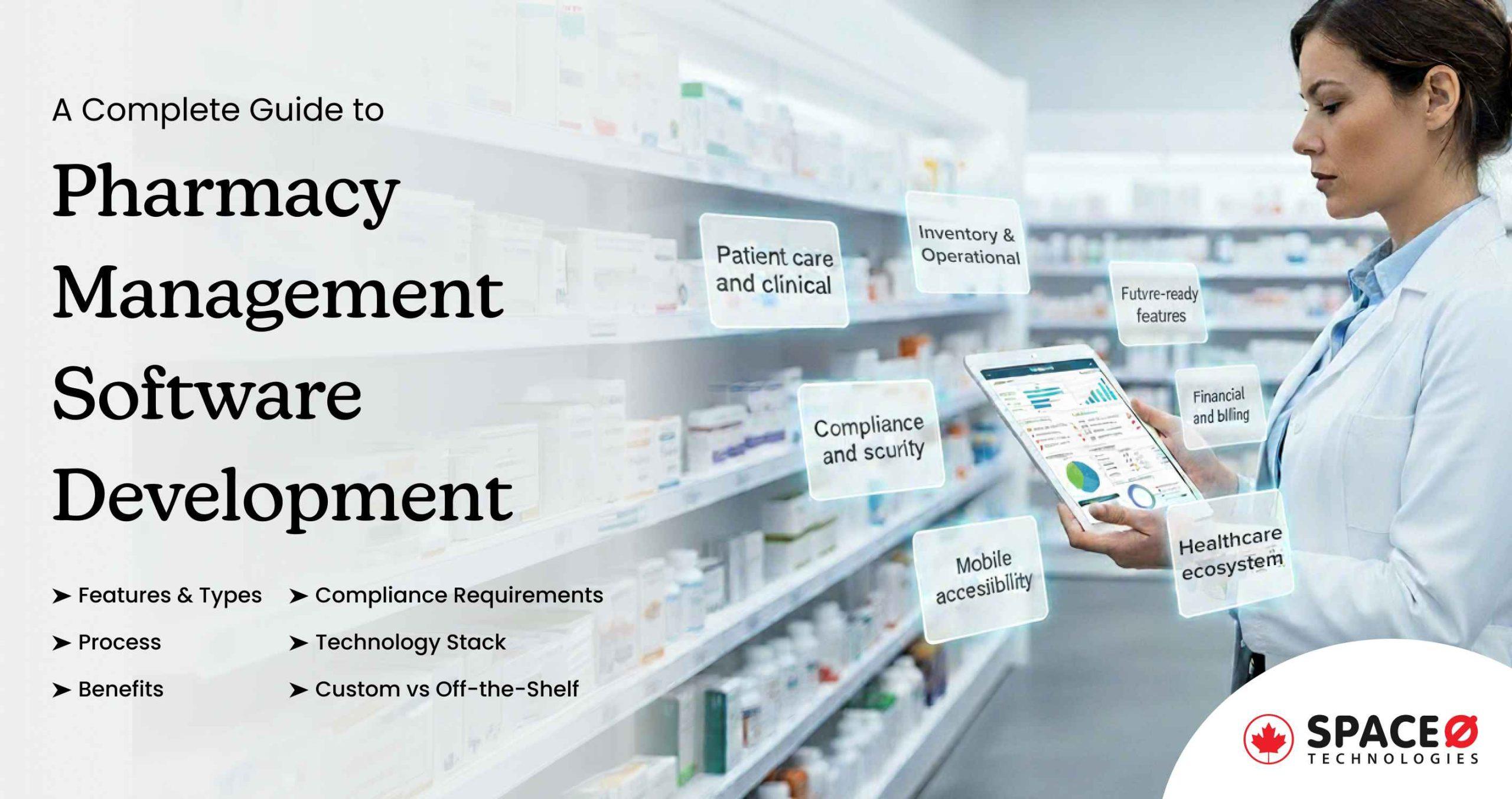
What is the Waterfall Software Development?
Waterfall methodology is one of the best approaches to consider if you have a small and straightforward project.
ResearchGate conducted a study on waterfall methodology to determine when to use it. Also, conducted interviews with developers to know their experience when choosing a software methodology. And, found that the waterfall approach works best if you are aware of the requirements that will not change during the project development.
Let’s know everything in detail about why waterfall software development is relatively famous among developers through this guide.
Being a leading software company in Toronto, we have curated this guide to briefly explain all the essential information related to the waterfall methodology. Let’s get started.
Table of Contents
Introduction of SDLC Waterfall Methodology
The waterfall model is the first model and software development life cycle (SDLC) approach that was introduced to build software. In the waterfall approach, each stage must be completed before initiating the next phase as there is no overlapping in the phases.
You might be wondering what is the waterfall model in software development. The waterfall model defines the software development process in a linear sequential flow. Therefore, it is also referred to as the linear-sequential life cycle model, which is easy to use and understand. When using this methodology, there is no chance of overlapping any software development phase and you can measure progress easily.
Even though it is quite old, the waterfall methodology is the widely used approach amongst other software development methodologies.
If you are now curious to know more about the waterfall process, then check this next section.
Want to Develop a Custom Software?
Space-O is a top software development company specializing in developing software solutions using various methodologies, such as waterfall, agile, and scrum.

What are the Phases of the Waterfall Model?
The waterfall process is widely used in software engineering to ensure the successful delivery of a software development project. The whole waterfall process is divided into 2 segments, where the result of the previous phase is the input for the next phase.
Here is the visual representation of the different phases of the waterfall model.
Now let’s discuss all the phases of the waterfall model one by one in detail.
Requirement Gathering and Analysis Phase
At this stage, you will need to gather all the possible requirements for your software project. It involves understanding what needs to be designed and how the features will function in software.
Once the requirements are gathered, the following phases can be accurately planned for the development process. To ensure everything is gathered properly, you need to record all the requirements in a software requirements specification document, which includes:
- Assumptions
- Dependencies
- Risks
- Software Development Costs
- Software Development Timelines
- Success metrics
Now to study the requirements, you are moved to the second stage, where the system design is prepared. Let’s check the following section.
Before that, if you are interested in software requirement documentation, here is the template. Download this SRS documentation template to know how requirements get defined for a particular software solution.
 Download
Download
System Design Phase
This stage is designed to specify hardware and system requirements to define the overall system architecture. It also includes layouts, scenarios, and data models. Moreover, the system design is divided into 2 categories – one logical design and another physical design.
The logical design represents the purpose and scope of the project. In this stage, you put all the possible solutions on the table to analyze their strengths and weaknesses within the context of the vision.
Once the logical design phase is assessed, you move ahead with the physical design phase or detailed design phase, which represents the specifications of hardware and software technologies.
Implementation Phase
With the input taken from the system design, the system is then developed in small programs called units. Finally, these units are further integrated into the next phase. So, each unit is developed and tested in this stage, referred to as Unit Testing.
In this stage, you need a experienced software development firm to write all the coding for the software, keeping all the project specifications and requirements in mind. However, if significant changes are required, then the developers need to go back to the design phase before implementation and system testing.
Testing Phase
Before releasing the product, you need to test it to ensure that it has no errors and runs seamlessly. When the implementation stage is completed, then the manual software testers ensure that the units that are developed in the implementation phase go through this testing phase.
For this, the entire system is tested to remove faults from the software. In addition, the quality team will use documentation that was created during the design phase to run as many test cases as possible. This will ensure that there is no bug left and fixed before deployment.
Deployment Phase
Once the testing process, including functional and non-functional, is completed, the software is deployed on your server or released into the market for users to access and use it. This stage is known as deployment.
In addition, the software development team members who are involved in the deployment process should be responsible for the smooth launching of software and be aware that the software runs exactly the same way it is intended.
Maintenance Phase
In case you face some technical challenges while using software or any issue that comes up in the client environment, then you would be required to fix those issues as soon as possible.
To resolve these issues early on, patches are released. Also, you might need to use better versions to enhance the quality and overall performance of the software.
Now you know the different phases of the waterfall model. Next, you must want to know when you can actually implement this methodology for your custom software development. If so, read the next section. Check this guide to learn what is custom software development.
When to Use Waterfall Model?
As every software is unique and has a different set of features, you require a suitable software development life cycle approach that fits your requirements. Let’s discuss some of the scenarios where using a waterfall model is the best choice.
- When you know the requirements for the software in advance and are clear and fixed
- Have a clear picture of how software functionalities will proceed from the end-user point of view
- The tech stack for the software development is defined and easy to understand
- There are no ambiguous requirements involved in the process
- The project is short and simple to build within the estimated timeline
- Financial and expertise resources are fully available
Using the waterfall model comes with a lot of benefits. First, it is a straightforward and well-defined methodology for building the software. However, let’s discuss the significant benefits of using the waterfall model in the next section.
What are the Advantages of a Waterfall Model in Software Development?
As waterfall methodology follows a well-defined process and moves from ideation to design, then implementation, testing, deployment, and maintenance, each phase of this methodology is easy to understand.
Apart from this, here are the significant benefits of using the waterfall model:
- The waterfall model makes it easy for the developers to identify errors at the initial stages to avoid writing faulty code in the implementation stage
- It is efficient for the developers to estimate the cost of software development and timeline to the clients
- Clear defined milestones let you measure the progress of the project early on
- It allows for departmentalization and control to run the product through the different development process model phases one by one
- Any of the waterfall phases don’t overlap and gets completed one at a time
- The entry and exit of the waterfall model are well-defined, and it is easy to proceed with the development process
- All the requirements are known from the beginning, and the results are well-documented
Want to Develop a Software to Automate Your Business Operations?
Talk to us. Discuss your requirements with our experienced tech consultants and create a roadmap to execute it.
However, the waterfall model also has a few drawbacks that you need to know if you are planning to implement this methodology. Hence, we will discuss all the cons of the waterfall model below.
What are the Disadvantages of a Waterfall Model in Software Development?
Like any other methodology, the waterfall model has its own drawbacks.
One of the biggest drawbacks of using the waterfall model is that it doesn’t allow many revisions in the development process.
For example, if the software is in the testing phase, then it is very challenging to go back to the earlier phases in order to make corrections.
Apart from these cons, we are also going to discuss some more significant disadvantages of implementing the waterfall model.
- If clients are not aware of the requirements or don’t have clarity of the features to integrate, then it would be difficult for the developers to accommodate the features later on
- If one phase or stage is delayed, then automatically, all the following stages are delayed as the next phase is dependent on its previous phase, causing deadline to creep
- If you are changing your requirements frequently, then this model is not suitable for your project as it is challenging to make corrections in the earlier phases
- Not suitable for long and ongoing projects as complex projects take more time with this chronological approach than with an iterative method
- The risk mitigation strategy is difficult to prepare as testing is done at the later stage
AS one of the disadvantage is there the client is not aware of the requirements he want, this disadvantage can be easily solved by using spiral methodology. If you want to know how spiral helps in requirement gathering then you can read our blog on spiral software development methodology.
Still, looking for more answers on software development implementing the waterfall methodology? Find some of the most asked questions in the below section where we have answered them specifically.
Frequently Asked Questions
What is the difference between waterfall and agile project management?
The main difference is that the waterfall method is a linear system of working where the team completes one phase before moving on to the next phase. Whereas, agile methodology encourages the software development team to work simultaneously on the project.
Is a waterfall methodology a good strategy for software development?
Yes, the waterfall methodology is the most suitable approach when you have a small project, your requirements are clear, you have tight deadlines, and the required resources are available for your software development.
Which types of software can be built using the waterfall methodology?
Here are some of the few software types that you can build using the waterfall model.
- Human Resource Management Systems
- Supply Chain Management Systems
- Customer Relationship Management Systems
- Inventory Management Systems
- Point of Sales Systems
Let’s Develop Custom Software for Your Business
Despite being one of the oldest methodologies, the waterfall approach still holds a good position for developing smaller projects. If you are aware of the requirements, then this waterfall model will yield the best results for your software.
This guide has helped you discover all the 6 phases of waterfall methodology, the advantages and disadvantages of this approach, along with the conditions when it is suitable to use the waterfall approach. Now, it is easy for you to go ahead with this methodology.
In case you need assistance in implementing this approach for your software development project, then get in touch with the team of Space-O. We have experience developing over 300 software solutions. Hire our software developers to build a high-end futuristic software solution.
Editor's Choice

Telemedicine Software Development: A Complete Guide to Building Remote Healthcare Platforms

Medical Billing Software Development: The Complete Guide for Healthcare Providers

A Complete Guide to Pharmacy Management Software Development
All our projects are secured by NDA
100% Secure. Zero Spam
*All your data will remain strictly confidential.
Trusted by


Bashar Anabtawi
Canada
“I was mostly happy with the high level of experience and professionalism of the various teams that worked on my project. Not only they clearly understood my exact technical requirements but even suggested better ways in doing them. The Communication tools that were used were excellent and easy. And finally and most importantly, the interaction, follow up and support from the top management was great. Space-O not delivered a high quality product but exceeded my expectations! I would definitely hire them again for future jobs!”

Canada Office
2 County Court Blvd., Suite 400,
Brampton, Ontario L6W 3W8
Phone: +1 (437) 488-7337
Email: sales@spaceo.ca

